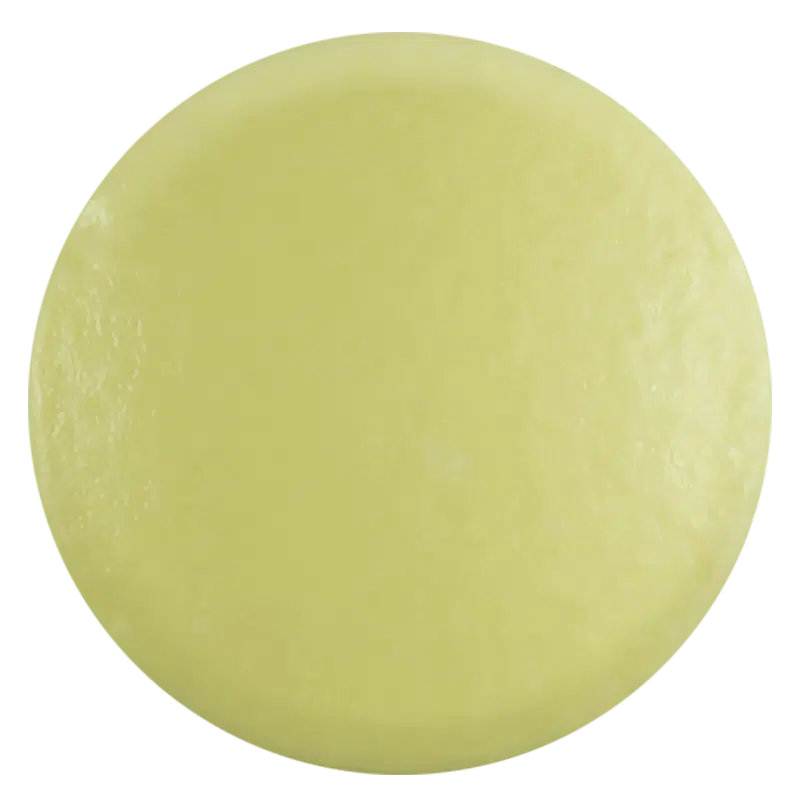Four different strength tablets to ease restless legs.


Ropinirole tablets are an effective treatment for Restless Legs Syndrome.
Talk to us about your health, and we can help you to choose the best treatment for you. Order Ropinirole online, and get it on a subscription that you can pause, change or cancel at any time.
Ropinirole is a tablet that’s made by a few companies, and it’s often prescribed to treat restless legs syndrome. Restless legs syndrome is a condition that mostly affects the nervous system. It often results in an uncontrollable urge to move your legs, and the symptoms can range from mild to severe.
Though restless leg syndrome can happen to anyone it’s more frequently seen in women, and it’s not fully understood how it develops. It might be the case that it’s a secondary condition to other issues, like diabetes, anti-nausea medication, iron deficiency and antidepressants. Regardless of the reason-behind or severity of a patient’s restless legs syndrome, ropinirole can help in reducing the symptoms.
Ropinirole contains the active ingredient: ropinirole hydrochloride, a dopamine agonist. Restless legs syndrome is thought to be caused by a condition within the basal ganglia that creates problems with your dopamine receptors.
These receptors are important, as they control the neural signalling that modulates behaviours. With restless legs syndrome signals from the brain aren’t controlled properly, which can result in abnormal sensations like painful burning, prickling or aching, or a strong urge to move your legs (although it can occur in the arms as well).
Ropinirole is effective at treating restless legs syndrome, as the dopamine agonist contained within it increases the production of dopamine in the brain. Given that a lot of people with restless leg syndrome have it because they don’t have enough dopamine in the brain, its increased production can result in a reduction of symptoms as levels are restored, making the nervous system behave more normally.
Ropinirole comes in a variety of doses, specifically: 0.25mg, 0.5mg, 1mg and 2mg. Typically, treatment will begin at 0.25mg before its effect is monitored and you’re prescribed with a maintenance dose of the tablet.

How we source info.
When we present you with stats, data, opinion or a consensus, we’ll tell you where this came from. And we’ll only present data as clinically reliable if it’s come from a reputable source, such as a state or government-funded health body, a peer-reviewed medical journal, or a recognised analytics or data body. Read more in our editorial policy.
Before taking Ropinirole please check the ingredients to make sure that you’re not allergic to it. You should also not take it if you have a serious kidney disease or any kind of liver disease. You also need to notify your clinician before taking Ropinirole if you:
It will then be up to our clinician to decide if you’re suitable to take Ropinirole. If you’re given the go-ahead to begin treatment, taking Ropinirole is incredibly straight forward:
It should take approximately two days of regular dosing for ropinirole to reach stable blood levels in the body. So you should begin to notice its positive impact fairly quickly after you start taking it.
It’s recommended that you read your patient information leaflet before you begin taking Ropinirole to ensure that you’re getting your doses right. If you do make a mistake though, for instance if you take too much Ropinirole, then you should seek medical help immediately. If you miss a dose, you should not take more the next time in order to make up for it.

How we source info.
When we present you with stats, data, opinion or a consensus, we’ll tell you where this came from. And we’ll only present data as clinically reliable if it’s come from a reputable source, such as a state or government-funded health body, a peer-reviewed medical journal, or a recognised analytics or data body. Read more in our editorial policy.
Have something specific you want to know? Search our info below, or ask our experts a question if you can’t find what you’re looking for.
Restless legs syndrome: Treatment with dopaminergic agents. Neurology, 58(Supplement 1), pp.S87–S92.
Ropinirole for the treatment of restless legs syndrome. Neuropsychiatric Disease and Treatment, 2(4), pp.407–419.
Ropinirole for the treatment of restless legs syndrome. Neuropsychiatric Disease and Treatment, 2(4), pp.407–419.
Great service
Great service, let you know before prescription due , quick and easy delivery.
they deliver what they promise to do
They are working. but I used to get them from my surgery but last month I was told this medication was out of stock I hope I will be able to get them under the NHS again because as a pensioner 48 pounds a month is an effort
Excellent customer service
Cannot fault this company. Excellent service and customer care.
Brilliant service, and very quick.
Brilliant service, and very quick. Easy to speak to a clinician and to change or pause your subscription. Highly recommend.
Recent order
Again I'm very happy with my recent order.and delivery.
Relief from Restless Legs.
Excellent bespoke service with next day delivery and I have found some relief by taking Ropinirole for RLS. The Doctor's communication and advice was helpful.
Fantastic service
I’ve been using Treated for a good while now and it has been effortless. Such an easy service to use and the chemists are very knowledgeable and helpful.
Excellent
Just what I required. Will use your service again
For RLS
Thank you for being there, knowing my Ropinirole comes every month before I run out give me a great peace of mind.
Excellent service
Thankyou for promptness
5 Stars, I'm very happy with their serrvice.
It's a great site, and they delivered the medication very quickly, thank you so much!
Very Good Company
Professional. Helpful. Speedy turn around.
Great service as usual.. Thank
Great service as usual.. Thank you.m
Pramiprexole
Helpful with my restless kegs
slow to start
I think the tablets have taken time to work but I feel a difference in the last few days. The effect of dopamine is very subtle but to the person suffering from it's depletion the difference is miraculous, however hard to quantify. At last I feel some fluidity and relaxation of the legs. It has allowed me to sleep better for the first time in, well, I don't know how long other than it's been a long time since I got a proper chunk of sleep. I know because of shift work this is complicated and involves several factors but all the more reason to be able to live a stable regular lifestyle. As a train driver it is vital that I maintain a regular routine without being disrupted by problems with my legs and secondary thinking, ie worry of lack of sleep !
Turned up on time
I need higher dosage , I'm told they are on the way. Very good communication

Registered with GMC (No. 4624794)
Meet Daniel
Registered with GPhC (No. 2202465)
Meet Sanjeda
Registered with GPhC (No. 2070724)
Meet CraigDelivery, consultation, treatment. It’s all included in the price.
| Quantity | Starting from |
|---|---|
| 12 Tablets | £47.95 |
| Quantity | Starting from |
|---|---|
| 28 Tablets | £47.95 |
| 56 Tablets | £75.95 Save £19.95 |
| 84 Tablets | £105.95 Save £37.90 |
| Quantity | Starting from |
|---|---|
| 28 Tablets | £55.95 |
| 56 Tablets | £96.95 Save £14.95 |
| 84 Tablets | £135.95 Save £31.90 |
| Quantity | Starting from |
|---|---|
| 28 Tablets | £62.95 |
| 56 Tablets | £112.95 Save £12.95 |
| 84 Tablets | £162.95 Save £25.90 |
| 112 Tablets | £212.95 Save £38.85 |
| 168 Tablets | £312.95 Save £64.75 |
| Quantity | Starting from |
|---|---|
| 12 Tablets | £29.95 |
| Quantity | Starting from |
|---|---|
| 28 Tablets | £49.95 |
| 56 Tablets | £87.95 Save £11.95 |
| 84 Tablets | £121.95 Save £27.90 |
| Quantity | Starting from |
|---|---|
| 28 Tablets | £81.95 |
| 56 Tablets | £148.95 Save £14.95 |
| 84 Tablets | £212.95 Save £32.90 |
| 112 Tablets | £274.95 Save £52.85 |
| Quantity | Starting from |
|---|---|
| 30 Tablets | £42.95 |
| 60 Tablets | £72.95 Save £12.95 |
| 90 Tablets | £99.95 Save £28.90 |
| Quantity | Starting from |
|---|---|
| 30 Tablets | £59.95 |
| 60 Tablets | £105.95 Save £13.95 |
| 90 Tablets | £147.95 Save £31.90 |
| Quantity | Starting from |
|---|---|
| 28 Patches | £166.95 |
| 56 Patches | £281.95 Save £51.95 |
| 84 Patches | £396.95 Save £103.90 |
| Quantity | Starting from |
|---|---|
| 28 Patches | £166.95 |
| 56 Patches | £281.95 Save £51.95 |
| 84 Patches | £396.95 Save £103.90 |
| Quantity | Starting from |
|---|---|
| 28 Patches | £201.95 |
| 56 Patches | £349.95 Save £53.95 |
| 84 Patches | £499.95 Save £105.90 |
| Quantity | Starting from |
|---|---|
| 30 Tablets | £29.95 |
| 60 Tablets | £45.95 Save £13.95 |
| 90 Tablets | £59.95 Save £29.90 |
| Quantity | Starting from |
|---|---|
| 30 Tablets | £55.95 |
| 60 Tablets | £94.95 Save £16.95 |
| 90 Tablets | £128.95 Save £38.90 |
We know health, but you know you.
Our experts tell you what’s safe, but you decide what’s best.
Answer a few questions and tell us about yourself. Get tailored advice from our clinicians so you can choose better.

Choose your treatment and how often you have it delivered.

We know things change. It’s the nature of life. We’ll check in regularly to make sure your treatment is still right for you.
Pause. Change. Skip. Start again. Any time you like.
Always arrives on time and I’m kept informed of progress.
I have had it previously from my G.P so It worked as expected, extremely well. My problem is an accessing my G.P practice, they put ED well down their list of priorities. I found your service excellent, quick and efficient. I fully intend to continue using it
Shipping is speedy and the product is amazing.
Fast, slick service. Very easy to amend subscription when required.
All good.
Great service
Really helped me
Trusted service and great service - next day delivery and I can rely on them to send regularly.
Ordering was straight forward, tablets delivered promptly and well packaged, and instructions were clear, thanks.
100% recomended.Great service
Excellent service
Excellent delivery. Can’t fault.
Quick and efficient service, delivered discreetly the next day. Thank you.
Effective
Great service, no wait time
Great
Quick assessing for medicine suitability. Quick delivery and good communication throughout.
Straightforward and quick service!
Good however communication could sometimes be better
Easy and good procedure to get treatment
Excellent product
Excellent service!!! Ordered what I needed sent a picture of my prescription and the parcel arrived the next day!!! Will definitely order again and have recommended to others!!!
Fast shipping
Very quick service all round
So quick and simple. Recommend
Great
Very convenient hassle free service.
Easy to use good communication and fast shipping
Great service
Efficient no issues re delivery
Fabulous service
Brilliant service. Not a bad word to say!
It was fast, professional and it's the right med for what I selected in there.
This review requires content. Oh well..
Great service, quite effortless.
Top notch
Brill service
N/a
Excellent service quick and easy to use
Fast and exact order
Superb service and quick delivery 10/10
Excellent service
Thank you for fast delivery
Shipping is extremely quick and satisfiying
Good stuff
Good service
Great fast delivery
Restless legs syndrome: Here are some other options.
Branded version of Ropinirole. Available in three doses for tried and tested RLS relief.
Branded version of Pramipexole. Simple nightly pill for RLS.
A patch that gives you 24 hour protection from restless legs syndrome.
Nightly tablets for restless legs. Sleep easier, live happier.
We're making healthcare more about you. Sign up to our newsletter for personalised health articles that make a difference.
Disclaimer: The information provided on this page is not a substitute for professional medical advice, diagnosis, or treatment. If you have any questions or concerns about your health, please talk to a doctor.
We couldn't find what you're looking for.
Here's everything we treat. Or, if you're looking for something we don't have yet, you can suggest something.
If there’s a particular treatment or condition you’re looking for, tell us and we’ll look into it for you.
Submit your question here, or tell us if you’ve found an issue on our site.
We’ll get back to you very soon. We aim to respond to all queries in one working day.
You’re signed up to our newsletter. Keep an eye on your inbox for our latest update.
By clicking 'Subscribe now' you're agreeing to our Privacy Policy.
We’ve sent you an email asking you to confirm your email address.